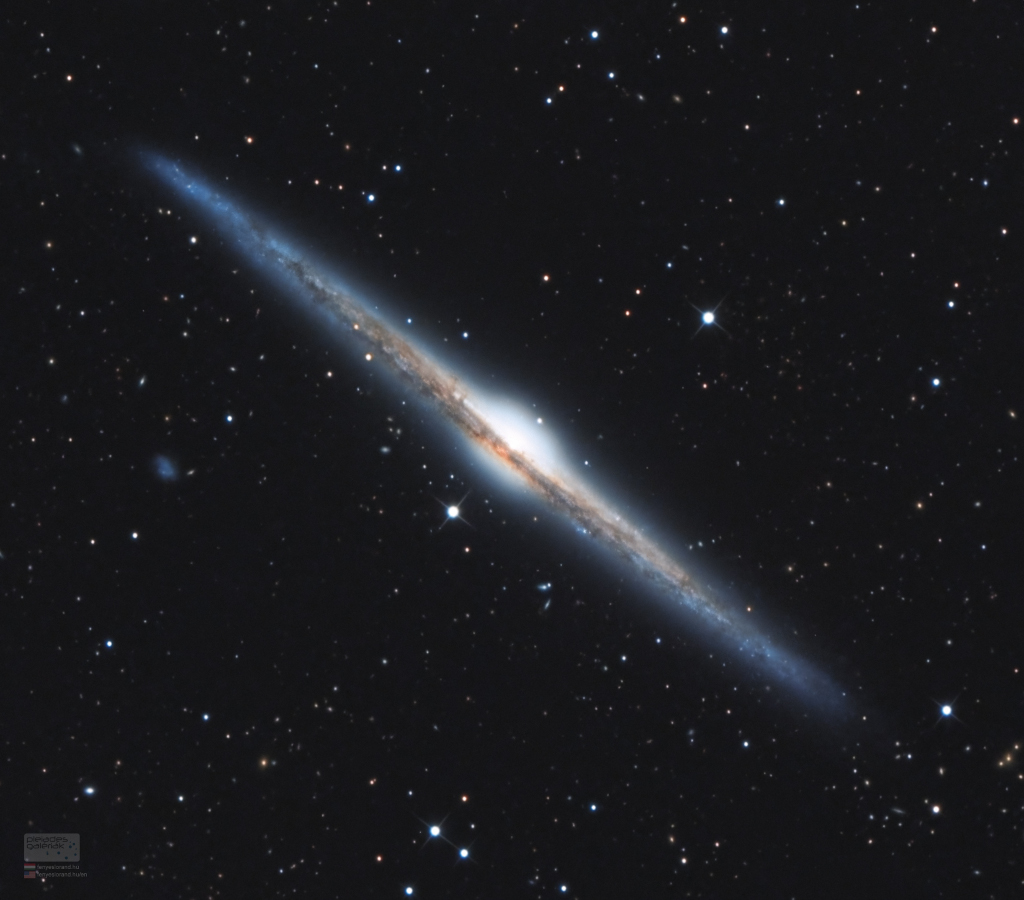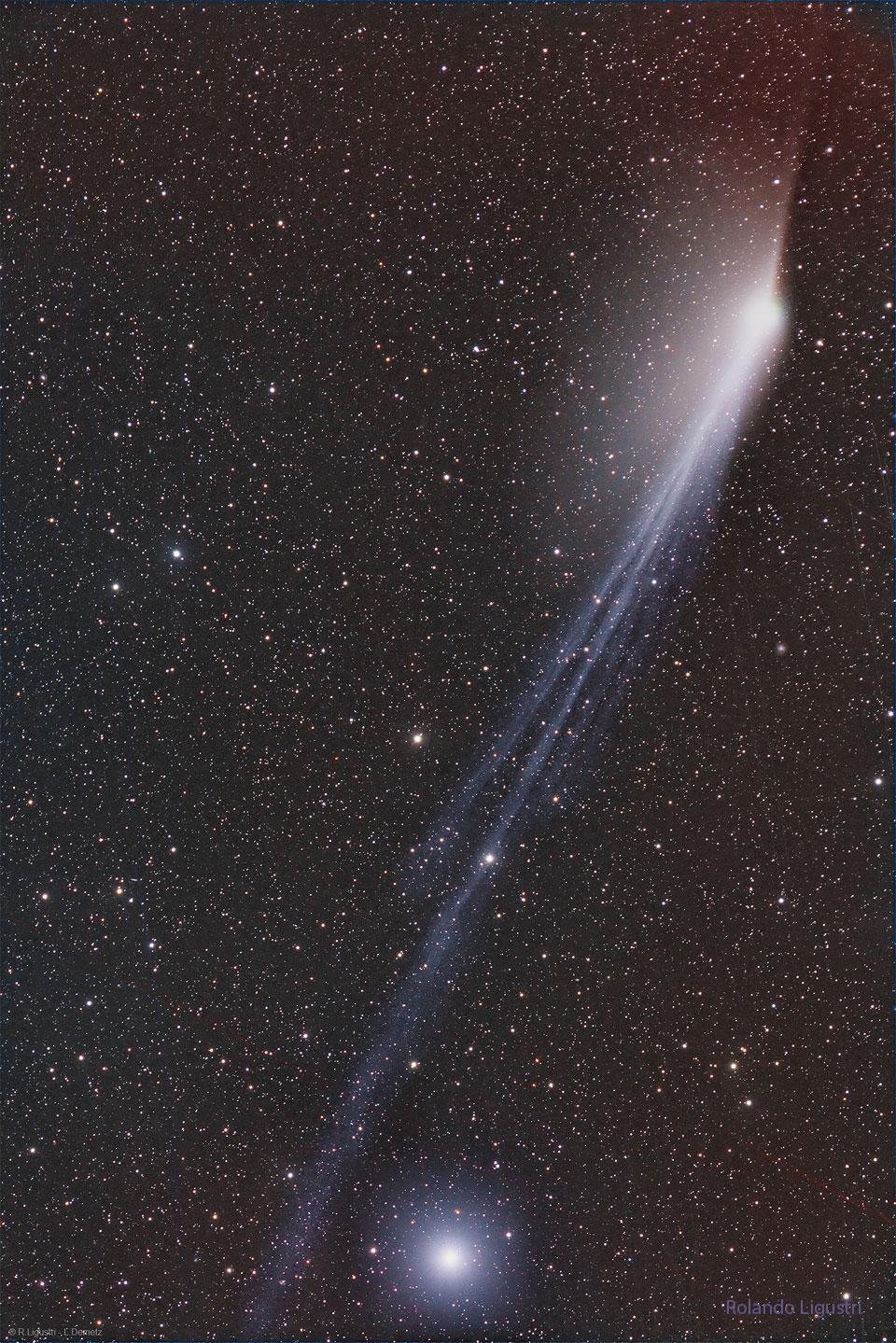Nombre total de pages vues
07/06/2024
NUCLEAIRE - Comment survivre à une explosion nucléaire - Restez connecté
ASTRONOMY - SH2-308: The Dolphin Head Nebula
2024 June 7
Image Credit & Copyright: Prabhu Kutti
Explanation: Blown by fast winds from a hot, massive star, this cosmic bubble is huge. Cataloged as Sharpless 2-308 it lies some 5,000 light-years away toward the well-trained constellation Canis Major and covers slightly more of the sky than a Full Moon. That corresponds to a diameter of 60 light-years at its estimated distance. The massive star that created the bubble, a Wolf-Rayet star, is the bright one near the center of the nebula. Wolf-Rayet stars have over 20 times the mass of the Sun and are thought to be in a brief, pre-supernova phase of massive star evolution. Fast winds from this Wolf-Rayet star create the bubble-shaped nebula as they sweep up slower moving material from an earlier phase of evolution. The windblown nebula has an age of about 70,000 years. Relatively faint emission captured by narrowband filters in the deep image is dominated by the glow of ionized oxygen atoms mapped to a blue hue. Presenting a mostly harmless outline, SH2-308 is also known as The Dolphin-head Nebula.
06/06/2024
NUCLEAIRE - Comment survivre à une explosion nucléaire - Nettoyez !
ASTRONOMY - NGC 4565: Galaxy on Edge
2024 June 6
Image Credit & Copyright: Lóránd Fényes
05/06/2024
SANTé/MEDECINE - Virus et bactéries mortels - Le Virus A H5N1, à l'origine de la grippe qui fait trembler le monde
NUCLEAIRE - Comment survivre à une explosion nucléaire ? Mettez des priorités en place
ASTRONOMY - Shadow of a Martian Robot
2024 June 5
Image Credit: NASA, JPL-Caltech, MSSS, ASU, NeV-T, Perseverance Rover;
Processing & Copyright: Neville Thompson, Gigapan Zoom
Explanation: What if you saw your shadow on Mars and it wasn't human? Then you might be the Perseverance rover exploring Mars. Perseverance has been examining the Red Planet since 2021, finding evidence of its complex history of volcanism and ancient flowing water, and sending breathtaking images across the inner Solar System. Pictured here in February of 2024, Perseverance looks opposite the Sun and across Neretva Vallis in Jezero Crater, with a local hill visible at the top of the frame. The distinctively non-human shadow of the car-sized rover is visible below center, superposed on scattered rocks. Perseverance, now working without its flying companion Ingenuity, continues to search Mars for signs of ancient life.
04/06/2024
SANTé/MEDECINE - Virus et bactéries mortels - Mycobacterium tuberculosis, l'agent mortel de la tuberculose
NUCLEAIRE - Comment survivre à une explosion nucléaire ? Privilégiez la distanciation sociale
ASTRONOMY - Comet Pons-Brooks Develops Opposing Tails
2024 June 4
Image Credit & Copyright: Rolando Ligustri & Lukas Demetz
Explanation: Why does Comet Pons-Brooks now have tails pointing in opposite directions? The most spectacular tail is the blue-glowing ion tail that is visible flowing down the image. The ion tail is pushed directly out from the Sun by the solar wind. On the upper right is the glowing central coma of Comet 12P/Pons–Brooks. Fanning out from the coma, mostly to the left, is the comet's dust tail. Pushed out and slowed down by the pressure of sunlight, the dust tail tends to trail the comet along its orbit and, from some viewing angles, can appear opposite to the ion tail. The distant, bright star Alpha Leporis is seen at the bottom of the featured image captured last week from Namibia. Two days ago, the comet passed its closest to the Earth and is now best visible from southern skies as it dims and glides back to the outer Solar System.
SANTé/MEDECINE - Cancer Espoir : (2/3) Un système qui s’active seulement dans les cellules cancéreuses
Des chercheurs de l’École de médecine Icahn du Mount Sinaï ont développé une nouvelle approche basée sur l’ARN messager, conçue pour agir un...

-
2022 September 26 All the Water on Planet Earth Illustration Credit: Jack Cook, Adam Nieman, Woods Hole Oceanographic Institution ; Data ...
-
2025 May 11 The Surface of Venus from Venera 14 Image Credit: Soviet Planetary Exploration Program , Venera 14 ; Processing & Copyri...









